By Makenzie Long
October 3, 2024
Makenzie Long is an undergraduate student majoring in Anthropology here at NAU. This summer she spent three weeks in field school at Apex, Arizona under the guidance of Dr. Emily Dale. After graduation she intends to pursue a career in the field as a Historical Archaeologist. Her sketches of Jack-o-Canterns and intact shoes helped capture unique details of Apex’s artifacts.
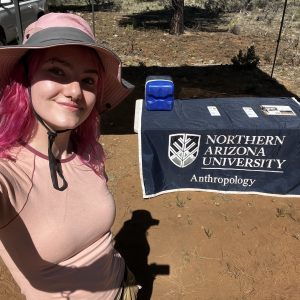
For more about Apex or the Apex, Arizona Archaeology Project information visit our website or email Dr. Emily Dale at emily.dale@nau.edu.
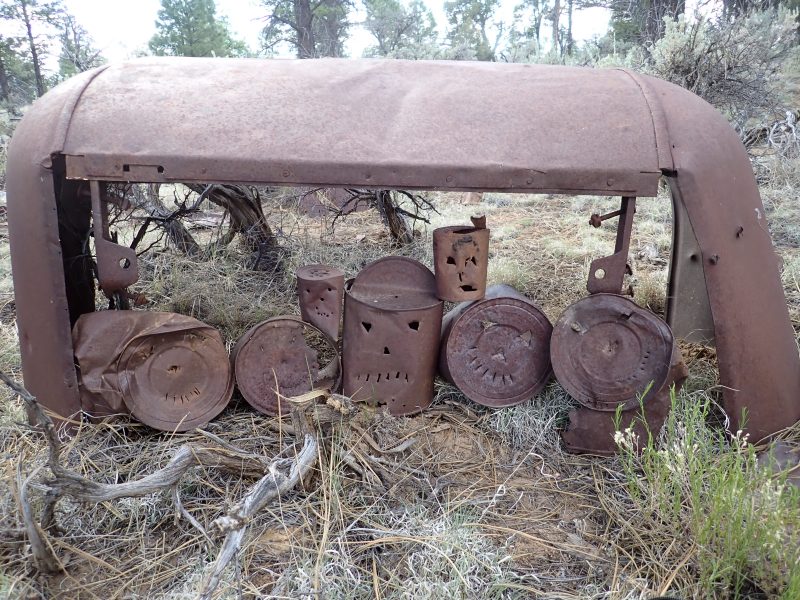
Leaves are falling, scarves adorn necks, a chill is present in the air. Fall has arrived, bringing with it many beloved traditions, like the timeless act of carving pumpkins. About 80 miles north of Flagstaff lies the small, long-abandoned logging town of Apex. Though only inhabited during the Great Depression era, the residents of Apex participated in many fall traditions, but with their own unique twist on the festivities. Instead of pumpkins, they utilized some of those thousands of cans on site of varying sizes to create their version of Jack o’ lanterns.
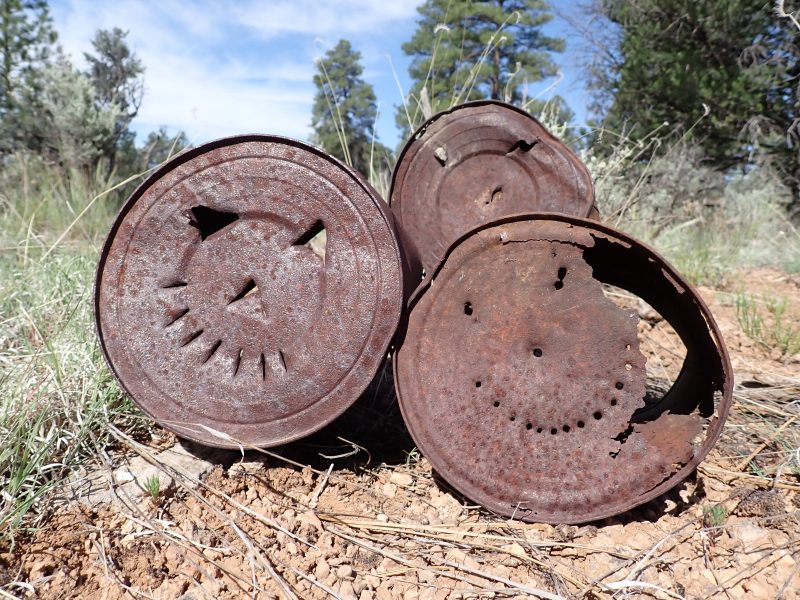
Apex was a temporary company town, with a population made up of mostly Scandinavian (primarily Swedish) loggers. However, other inhabitants included “Okies” fleeing the Dust Bowl, Indigenous and Mexican laborers, all drawn to the area for work. The town, divided by the railroad tracks, features Swedish families and management living on one side, while the single laborers — primarily Indigenous and Mexican workers — lived on the other. The 1930 census recorded 27 children, between the ages of 2 and 17, living at the Saginaw Logging Camp, with an average age around 7. Despite the clear physical division of the town, one fascinating detail emerged: the tradition of crafting Jack o’ lanterns from cans, affectionately referred to by project staff as “Jack-o-Canterns.” The Jack-o-Canterns, crafted from simple metal cans, vary in styles and cutting techniques, perhaps indicating different creators of the seven modified cans the field students have found so far.
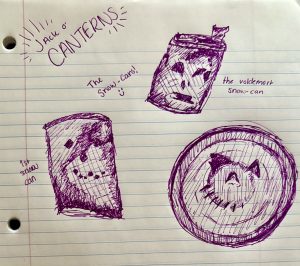
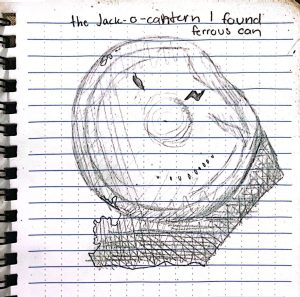
We surmise that the modified cans were crafted by the children of the logging town, as they all were found in locations with other evidence of children and on both sides of the railroad tracks. Perhaps they were created as a Halloween school craft to celebrate the largely American holiday. It is important to note that many of the children in the 1930 census are first-generation Americans, with immigrant parents born in Sweden and Mexico. This activity could have bridged their two cultures together, and the Jack-o-Canterns reveal that the immigrants were assimilating into more traditional American culture or encouraging their children to do so.
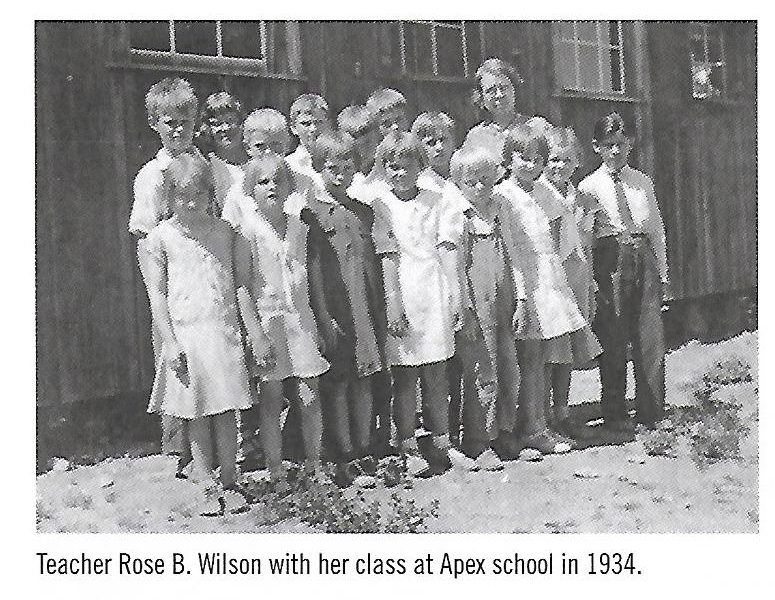
The seven Jack-o-Canterns were all carved on cylindrical cans that lacked embossing or other diagnostic elements, yet they vary in size and carving placement. Additionally, different techniques were used to create the faces, including knife cuts, punctures, and square and round nail holes. So far, of the seven discovered, three feature the face on the body of the can while the other four have the design present upon the base of the can. In 2024, field school students and site tourists found our first tiny Jack-o-Canterns, pictured below (also referred to as snow-cans as they resemble the top segment of a snowman, although the second of the two “snow-cans” presents a much more Voldemort-esque appearance than a friendly frosty-like face)! Unlike the five larger Jack-o-Canters, these were made from a “No. 1 tall” can or a “No. 1 short” can, which commonly contained food such as beans, meats, and tomatoes. Seeing the variety in expressions present on the cans really makes the viewer wonder what these children were thinking, why these cans were left behind, and if they continued the tradition when they moved on to the next place.
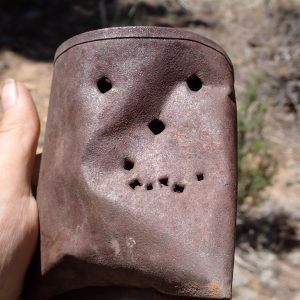
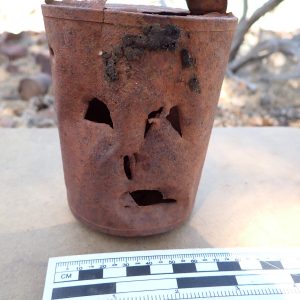
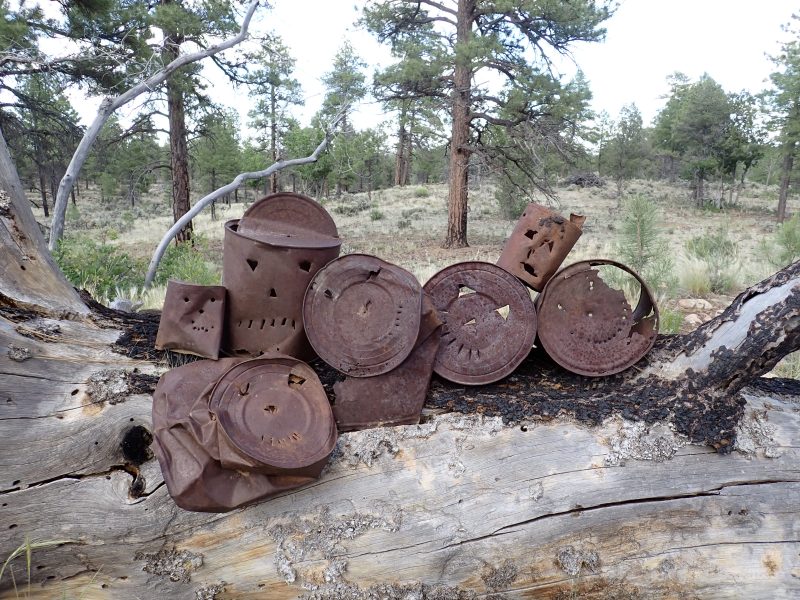
Finally, the Jack-o-Canterns are not the only modified cans at Apex. Other cans contain nail punctures that may have converted trash into useful sifters, while others appear to be more aesthetic in purpose. The can pictured below, for example, was carved to create a star-pattern, possibly used in conjunction with a candle or flashlight to project an image, similar to the Jack-o-Canterns.
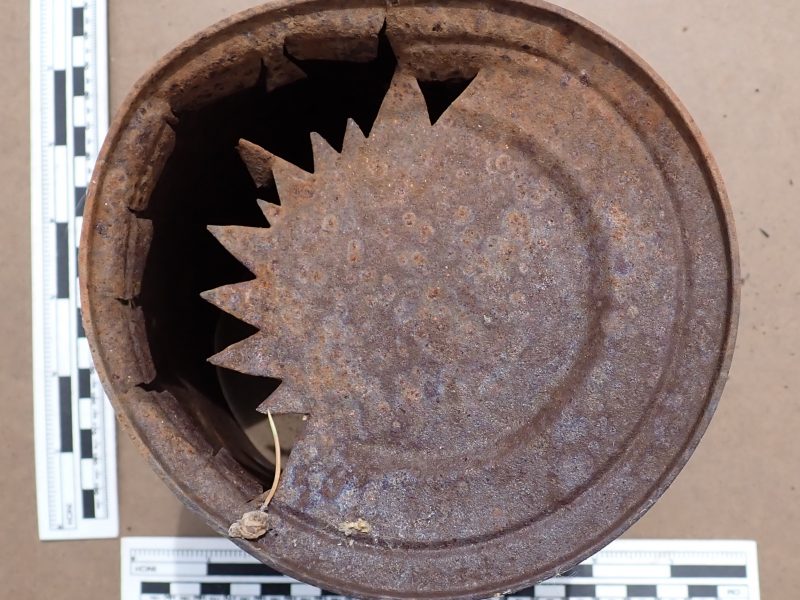
Mystery Artifact
While this can appears to be modified with the initials J.S., the small puncture marks are uniform and standardized and appear instead to be part of the manufacture of this hinged can lid. Measuring about 7cm long by 5cm wide, we have been unable to find any record of a can lid bearing this mark. Let us know if you have any information!
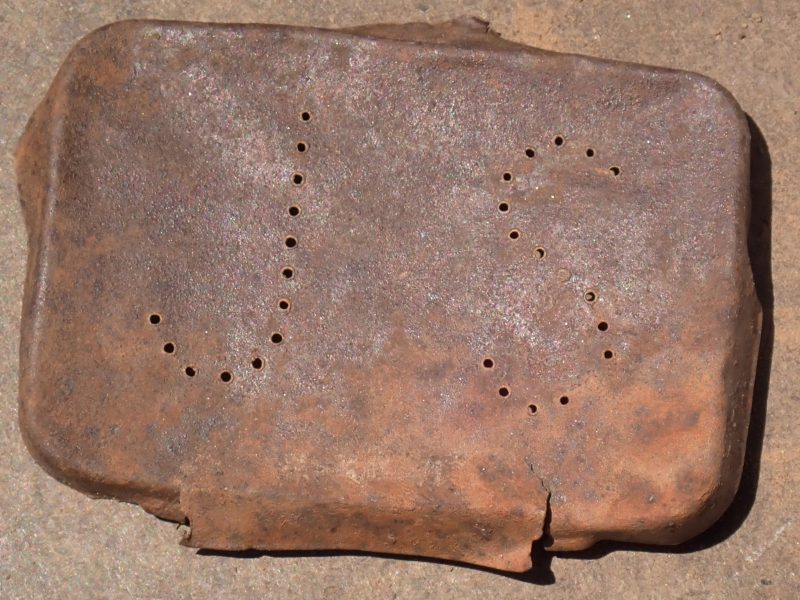
Sources
Dale, Emily 2023 Archaeology at Apex, Arizona. Arizona Preservation Webinar Series.
Dale, Emily and Rachael O’Hara 2024 “A 250% Increase in Jack-o-Canterns: Historical Archaeology at a 20th-Century Northern Arizona Logging Camp,” Pecos Conference, Chino Valley, Arizona
Maddock, Tim 2024 Life, Work, and Identity at Apex, Arizona: The Archaeology of a Twentieth-Century Logging Camp and Company Town. Unpublished M.A. thesis, Department of Anthropology, Northern Arizona University.
Richmond, Al 2018 The Story of Grand Canyon Railway: Cowboys, Miners, Presidents and Kings. Grand Canyon Canyon Conservancy, Grand Canyon, Arizona.
Sheryl 2019 Can Sizes a Hundred Years Ago. A Hundred Years Ago. 11 April 2019. https://ahundredyearsago.com/2019/04/11/can-sizes-a-hundred-years-ago/